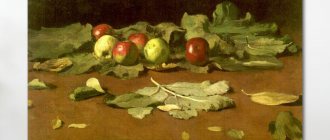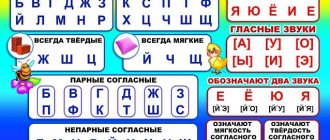Correct articulation
The exercises described above clearly demonstrate that the production of the sound [H] is possible in several ways, which differ in the method of sound production:
1. Use of a reference sound and correct placement of successive movements of the tongue:
- The baby is asked to always pronounce soft [t'] and at the same time concentrate on ensuring that the tongue is tightly adjacent to the alveoli. Then the specialist shows how to curl the tongue towards the larynx from this position. A spatula is used for this. If the isolated sound [t'] is difficult for him, you can replace it with [at'];
- the child is asked to say [t'] and at the same time press the corners of his mouth with his fingers, stretching his lips out like a tube. With this position of the lips, the tongue automatically slides back.
2. Using the effect of merging parts [H]:
- you need to ask the baby to consistently but quickly pronounce the hard voiceless [t], followed by [sch]. At first this is done slowly, and then with increasing tempo of acceleration. It is important that the pronunciation is formed while exhaling.
3. Exercise using a playful form of imitation:
- imitate the chirping of a grasshopper or “call” ducks – “kacha-kacha”;
- read poetry to the child: the adult reads the lines and pauses in those places where the child should utter a sound.
4. Use reference sounds:
- ask to pronounce the sound “t”, focusing on the correct position of the tongue. As the child pronounces, accompany the sound formation with the movement of a bending palm.
It is difficult for a non-specialist to determine which method is suitable for a child. To do this, parents can alternately use each of these exercises. Based on the results of the work, its effectiveness is assessed. The main thing is not to stop at the fact that the child can differentiate the sounds [t'] and [h], because the articulatory skill has not yet been consolidated.
Sound automation [h]
To automate pronunciation, the following sequence of exercises is used:
- first pronouncing direct and then reverse syllables: cha-ach, uch-chu, cho-och;
- pronouncing one- and two-syllable words with [h] at the end: ball, game, bulls, bird;
- pronunciation of words where the sound is in the middle: barrel, duck, spiders;
- pronouncing words that begin with [h]: teapot, cast iron, Chukotka;
- reading or pronouncing phrases with sound, pairing them: tea cups, leather suitcase, stump-stump, cat-cat.
- pure phrases and poems saturated with this sound are the final part of speech therapy work on automation.
Automation of the sound [h] in straight syllables
Automation of the sound [h] in reverse syllables
Automation of sound [h] in words
Automation of sound [h] in phrases and sentences
Automation of sound [h] in pure language
Automation of sound [h] in poems
Articulation gymnastics
First, you need to “warm up” your tongue, because this organ is a large muscle. Here are some exercises to help prepare her for work:
- “Cleaning your teeth”: you need to run your tongue along the inside of your upper teeth. This needs to be done at increasing speed. It is important that it comes into contact with the base of the teeth - the place where they meet the gum. This is where the alveoli are located.
- “Mushroom”: this task will help those children who had problems with other sounds due to a short frenulum. The baby needs to stretch his lips in a smile and press his wide tongue against the upper palate. The wider the mouth is open, the better the result.
- “Sweets”: put toffee or chocolate on the tip of your tongue and stick it to the upper palate near the front teeth. It is important to keep your mouth wide open. Unlike the sound production exercise, the child does not need to pronounce it, because the task is to strengthen the muscle.
If the child likes to do this, then it can be placed at the end of the articulation block and from there move on to pronouncing the sound [Ch]: first, the exercise is without sound, and then it is complicated by the need to pronounce [Ch].
Differentiation of sounds Ch-S.
You can begin to differentiate only after the sound has been delivered and automated.
Pronounce (read) the syllables: cha-sa cha-sya sa-cha sya-cha ach-as ach-as; chu-su chu-syu su-chu syu-chu uch-us learning; cho-so cho-syo so-cho sho-cho och-os och-os; che-se che-se s-che s-che ech-es es-ech; chi-sy chi-si sy-chi si-chi ich-is is-ich. Pronounce (read) words.
| seagull - cod cup - Sasha's sheepfold - kennel tank - bass bun - piece rocked - wrote pier - squat knocked - bitten screamed - danced little chicken - black gosling - weedy liver - smoked pine - I'll cure the piglet - I'll take it out - I want to - I'm carrying a sharpening - my braid is an eccentric - pike perch shack—dishes pepper—peach | trained—bitten larva—aspen wolf—fox sharpened—mowed very much—autumn crying—kvass pitching—whose helmet—sow swing—sat down poker—earring dog—sausage night—Pug hummocks—boards night—prickly socks—pricking hot—struggling stove— fishing line linyuch—lazy pigtails—sausages riverman—forester |
Pronounce (read) words with sounds [h] and [s]: learning, spinning, tormenting, swinging, healing, owls, hour, often, part, net, candle, twig, daredevil, hairstyle, racing, gallop, dog, nippers , juicy, shirt, pieces, hibernation, hide, match, braid, fox, candle, word, sleigh, handbag, seeds, Sonechka, Siberian, bench. Pronounce (read) phrases and sentences. Pen in purse. The girl has a watch. Sonechka has pigtails. The boy has a shirt and socks. This is not a string, but a ribbon. Sonya loves autumn very much. Let's go on the swing carousel. The rocking began and the mast began to sway. Alyonka has two pigtails - they stick out like the ears of a fox. What miracles! Vasya has been whining for two hours. The wolf at night, thinking of getting into the sheepfold, ended up in the kennel. The boy is walking around sadly, and the angry bees have bitten him. A bitter, biting, biting, prickly, prickly frost attacked us. The little cowardly bunny hid near the stump. The cuckoo in its new rank sat down importantly on the aspen tree. Pronounce (read) texts. Mystery. In a cleanly tidied little room, these sisters sleep all day long, small sisters. They get a light. (Box of matches) Waders. -Who's wandering by the river? - These are our Easter cakes. - What do they want? - Feed your guys. - Where are the guys? - On the sand. - How many are there? - Son and daughter. All the feathers on my son's neck are wet, because, without asking, he stuck his beak straight into the dirt. - Well, what about your daughter? - Well, my daughter only walks on sand. Long-nosed daughter, Long-tailed daughter. My daughter walks slowly. The daughter is very good. (N. Dilaktorskaya) Learn a poem by heart. Boats. Ten light boats came out of the nutshells... A match with a red piece of paper - The mast in the middle. And the winch boats floated along in a stream. The streams ring and sing, and then you know they meet. Our boats are sailing, rocking on the waves. (E. Blaginina) Pronounce (read) and retell the text. The clock is rushing. Sonya's mother woke her up. - Get up, daughter, get ready for school. While Sonya was getting ready, mom boiled the kettle. She put cups and a bowl of cookies on the table and cut up a roll. She poured hot tea into cups. - Sit down, daughter, drink tea. Sonya drinks tea. Mom drinks too. Mom looks at her watch and says: “Sonya, stop drinking tea.” Time to go. - Mom, the clock is fast. - No, the clock is not fast. You're the one drinking your tea slowly.
Sound setting [h]
The articulation of the sound [H] can be set in 3 ways:
- Using part [t']: pronounce this sound at a very fast pace so that the tip of the tongue reaches the base of the upper incisors from the side of the palate. Then begin to wrap it, as if stroking the tubercle at the roots of the teeth - the alveoli. And at the same time you need to stretch the corners of your mouth wide, as if in a smile.
- Using two components [t'] and [sch']: smiling widely, first slowly, and then faster and faster, pronounce alternately [t'] and [sch']. Speed allows them to merge and achieve clear articulation of sound.
- Explain sound formation by breaking down the process into stages: for the exercise you need a piece of paper or a chocolate bar. It rests on the tip of the tongue and the child is asked to stick it over the hole, which is located between the upper incisors on the inside. To do this, you must first feel this place, and then send your tongue on a “task” with a piece of treat. To fix chocolate or paper, you need to apply force, which will serve as articulatory gymnastics and allow you to automate the movement of the tongue.
In all cases, it is necessary to sit the child in front of a mirror and focus on ensuring that he follows his movements in the reflection. Some parents ignore this rule, but speech therapy sessions are much more productive with visual control of the positions of the mouth and tongue.
Differentiation of sounds Ch - Shch
1. Pure sayings (repeat clearly and slowly)
| CHA-CHA-CHA – curl at the shoulder. | ACH-ACH-ACH - Nikita has the ball. |
| CHI-CHI-CHI - new keys. | OC-OC-OC - mom has a daughter. |
| CHU-CHU-CHU - I want juice. | UCCH-UCCH-UCCH - a bright beam is visible. |
| WHAT-WHAT-WHAT – left shoulder. | ECH-ECH-ECH - this is a huge sword. |
| SHA-SHA-SHA - the bunny walks without a raincoat. | ASCH-ASCH-ASCH - I have a raincoat. |
| SHI-SCHI-SPI - we ate cabbage soup. | OSCH-OSCH-OSCH - the horsetail has grown. |
| SHU-SHU-SHU - I'm looking for you. | USH-USH-USH - ivy has grown. |
| SHCH-SHCH-SHCH – we want to play more. | YET-YET-YET – there’s bream in the pan. |
2. Speak clearly, first in 2 and then in 3 syllables.
| thicket | chu-chu | what? | wow | wow |
| wow | chi-shi | cha-cha | chu-chu | cabbage soup |
3. Underline the pictures whose names contain the sound Ch, cross out the pictures whose names contain the sound Sh.
Differentiation of sounds Ch - Shch (No. 2)
1. Speak clearly, first in 2 and then in 3 syllables.
| right now | chu-chu-chu | more | wow | chi-chi-chi |
| wow | cabbage soup | cha-cha-cha | chu-chu-chu | wow |
2. Speak a couple of words clearly. Clarify their meaning.
Hot cheeks. Hot cabbage soup. I'm looking for a sharpener. I'm looking for a suitcase. Spiky brush. Smoked bream. Flying butterfly. Attending doctor. Dairy food. Student responding. Mailbox. Durable shield. Tweet. Juicy vegetables. I'm teaching a friend. Black puppy. Cleaning lye. Other people's things. Clean room. I'm cleaning the kettle. A wonderful treat.
3. Speak every word clearly.
Little things. Volchische. Tablet. Screaming. Dreaming. Silent. Responder. Ruchischi. Bored. Grinder. Student. Watchmaker. Thicket. Cleaner. Monster. I'm cleaning. Lye. Click. Puppy. A sliver. Brush. Cheeks. Pike. Box.
4. Determine the position of the sound Ch, Ш in words
5. Listen to pairs of words and make sentences with them.
Raincoat - dry cleaning. Cave - barrels. Repair - box. Meeting - square. Count - check. The river is a fishing rod. To drag - bricks. Turtle is a puppy. Chebureks-comrades. Closet - things. Box - keys. Switch - room.
Differentiation of sounds Ch - Shch (No. 3)
1. Based on the model, select and pronounce new words so that the sound Shch appears.
For example: A boy reading a book. Reading boy. A girl who is bored. (Bored girl.) The boy who answers at the blackboard. (Answering boy.) A girl who dreams. (Dreaming girl.) The girl who is silent. (Silent girl.) Boy who plays. (Boy playing.) Girl studying. (Student girl.)
2. Slowly say each rhyme 3-5 times.
The puppy is dragging a board into the thicket. Our Tanya has dimples on her cheeks. There are huge bats in the cave. The daughter was treated to cabbage soup and smoked bream. The ball bounced in the attic, a girl and a boy are looking for the ball in the sand, in vain. Two puppies in the attic were chewing on a brush in the corner.
3. Speak the tongue twisters clearly, first at a slow and then at a fast pace, maintaining clarity and volume of pronunciation.
Our Taechka has T-shirts in her drawer. The monster has monstrous tentacles. Thumbelina is on a sliver, Thumbelina has a brush. I scratch the puppy with a brush, tickling his sides. A predatory wolf prowls in vain in the grove. The puppy licked the scales of the pike.
Differentiation of sounds Ch - Shch (No. 4)
1. Based on the model, select and pronounce new words so that the sound Shch appears.
The boy who swims. (Floating boy.) A girl who meets her friend. (Greeting girl.) Girl who smiles. (Smiling girl.) Boy who dances. (Dancing boy.) Girl who spins. (Spinning girl.) A girl who laughs. (Laughing girl.) Girl who cries. (Crying girl.)
2. Slowly say each rhyme 3-5 times.
The bunnies were dragging a large carrot, they took a small bite of the carrot, then they wanted to take another bite, then... there was nothing left to drag. I run barefoot over the hummocks in the meadow to the river, and the grass tickles, I want to laugh! The spider arrived at the market, cleaned his goods with a brush, and shouted: “A wonderful new product! Flies! Come here! Gossamer!” A clean black puppy stained its side with something, the boy took the brush in his hands and began to clean the puppy’s side. The puppy endured it for two hours and couldn’t stand it any longer. He started wagging his tail and begging for mercy: “Why should I clean my side? I’m not a raincoat, I’m a puppy!”
3. Speak the tongue twisters clearly, first at a slow and then at a fast pace, maintaining clarity and volume of pronunciation.
I clean the cloak, clean it and clean it.
The watchmaker, squinting his eye, is fixing the watch for you. A puppy at the dacha drags everything into a box. The puppy, like a lamb, has fur in small rings. The bristles of a pig, the scales of a pike. Author of the material: Medvedkova Nadezhda Gennadievna
Differentiation of sounds [h]-[t], [h]-[ts], [h]-[sch],
The problem of separation of sounds [h]-[t] is typical for children who are learning to pronounce this sound in one language. The differentiation of sounds [ts]-[h]” and [h]-[h] is relevant for children from bilingual families. This replacement is typical for foreign languages of the Altai family.
For differentiation, the child is asked to pronounce syllables, words, phrases, sentences containing the sounds [h]-[t], [h]-[ts], [h]-[sch].
Differentiation of sounds [h]-[t] in syllables
Differentiation of sounds [h]-[t] in words
Differentiation of sounds [h]-[t] in words
Differentiation of sounds [h]-[t] in words
Differentiation of sounds [h]-[t] in riddles
Differentiation of sounds [h] - [t] in poetry
Differentiation of sounds [ch] - [ts] in syllables
Differentiation of sounds [ch] - [ts] in words
Differentiation of sounds [ch]—[ts] in phrases
Differentiation of sounds [ch] - [ts] in poetry
Differentiation of sounds [h]—[w'] in syllables
Differentiation of sounds [h]—[w'] in words
Differentiation of sounds [h]—[w'] in texts
Differentiation of sounds [h]—[w'] in poetry
Classes on production, automation and differentiation of sound [h] are recommended to last up to 10 minutes for children 4-5 years old and up to 20 minutes for 6-7 year olds.



